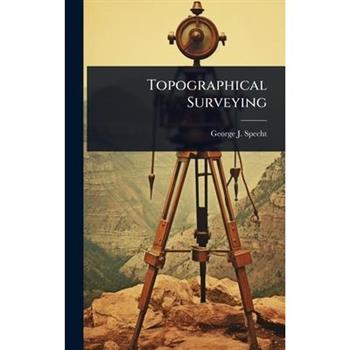International Library of Technology
"International Library of Technology, Volume 93" is a comprehensive textbook designed for individuals involved in engineering professions, trades, or those seeking information in these fields. This volume, part of a larger series, provides detailed instruction and reference material. A valuable resource for vocational studies and self-improvement.This work has been selected by scholars as being culturally important, and is part of the knowledge base of civilization as we know it. This work was reproduced from the original artifact, and remains as true to the original work as possible. Therefore, you will see the original copyright references, library stamps (as most of these works have been housed in our most important libraries around the world), and other notations in the work.This work is in the public domain in the United States of America, and possibly other nations. Within the United States, you may freely copy and distribute this work, as no entity (individual or corporate) has a copyright on the body of the work.As a reproduction of a historical artifact, this work may contain missing or blurred pages, poor pictures, errant marks, etc. Scholars believe, and we concur, that this work is important enough to be preserved, reproduced, and made generally available to the public. We appreciate your support of the preservation process, and thank you for being an important part of keeping this knowledge alive and relevant.
The British Clay Worker
Explore the intricacies of clayworking with "The British Clay Worker, Volume 13." This compilation offers a detailed look into the techniques, innovations, and challenges faced by clay workers. From brickmaking to more specialized ceramic applications, the volume provides a valuable resource for both practitioners and enthusiasts. Delve into practical advice and insights that remain relevant for anyone interested in the historical practices of clay construction and manufacturing.This work has been selected by scholars as being culturally important, and is part of the knowledge base of civilization as we know it. This work was reproduced from the original artifact, and remains as true to the original work as possible. Therefore, you will see the original copyright references, library stamps (as most of these works have been housed in our most important libraries around the world), and other notations in the work.This work is in the public domain in the United States of America, and possibly other nations. Within the United States, you may freely copy and distribute this work, as no entity (individual or corporate) has a copyright on the body of the work.As a reproduction of a historical artifact, this work may contain missing or blurred pages, poor pictures, errant marks, etc. Scholars believe, and we concur, that this work is important enough to be preserved, reproduced, and made generally available to the public. We appreciate your support of the preservation process, and thank you for being an important part of keeping this knowledge alive and relevant.
The British Clay Worker
Explore the intricacies of clayworking with "The British Clay Worker, Volume 13." This compilation offers a detailed look into the techniques, innovations, and challenges faced by clay workers. From brickmaking to more specialized ceramic applications, the volume provides a valuable resource for both practitioners and enthusiasts. Delve into practical advice and insights that remain relevant for anyone interested in the historical practices of clay construction and manufacturing.This work has been selected by scholars as being culturally important, and is part of the knowledge base of civilization as we know it. This work was reproduced from the original artifact, and remains as true to the original work as possible. Therefore, you will see the original copyright references, library stamps (as most of these works have been housed in our most important libraries around the world), and other notations in the work.This work is in the public domain in the United States of America, and possibly other nations. Within the United States, you may freely copy and distribute this work, as no entity (individual or corporate) has a copyright on the body of the work.As a reproduction of a historical artifact, this work may contain missing or blurred pages, poor pictures, errant marks, etc. Scholars believe, and we concur, that this work is important enough to be preserved, reproduced, and made generally available to the public. We appreciate your support of the preservation process, and thank you for being an important part of keeping this knowledge alive and relevant.
Home Carpentry For Handy Men
Home Carpentry for Handy Men is a comprehensive guide that empowers homeowners to tackle a wide range of carpentry projects with confidence. Written by Francis Chilton-Young, this practical manual provides clear, step-by-step instructions and helpful illustrations, making it an invaluable resource for both beginners and experienced DIY enthusiasts. From basic repairs to more ambitious construction tasks, this book covers essential techniques such as framing, joinery, and finishing. Learn how to build shelves, repair furniture, install doors and windows, and create custom woodworking projects for your home. With a focus on safety and efficiency, Home Carpentry for Handy Men equips you with the knowledge and skills to enhance your living space and save money on professional services. Discover the satisfaction of creating and maintaining your home with your own hands.This work has been selected by scholars as being culturally important, and is part of the knowledge base of civilization as we know it. This work was reproduced from the original artifact, and remains as true to the original work as possible. Therefore, you will see the original copyright references, library stamps (as most of these works have been housed in our most important libraries around the world), and other notations in the work.This work is in the public domain in the United States of America, and possibly other nations. Within the United States, you may freely copy and distribute this work, as no entity (individual or corporate) has a copyright on the body of the work.As a reproduction of a historical artifact, this work may contain missing or blurred pages, poor pictures, errant marks, etc. Scholars believe, and we concur, that this work is important enough to be preserved, reproduced, and made generally available to the public. We appreciate your support of the preservation process, and thank you for being an important part of keeping this knowledge alive and relevant.
Influences of Road Surface Characteristics on Scattering Mechanisms in Automotive Radar
In this work, the influence of different road surfaces and materials, or more precisely of different asphalt and concrete surfaces, is analyzed for the automotive 77GHz band. It comprises all roads commonly found on German highways and distinguishes in specular reflection and diffuse scattering behavior. The changeover from one to the other behavior is determined by the Rayleigh criterion resulting in corresponding critical angles. For these measurements the area of sands method, the focus beam method, a synthetic aperture radar (SAR) setup as well as a openspace FMCW radar setup with a corner reflector are applied. The characterization includes probability density functions (PDF) of the reflectance of these dielectric surfaces using normal distribution as well as Rayleigh distribution. For the evaluation of the openspace measurements, the radar equation and Fresnel's equations are used, resulting in relative permittivity and roughness values, which are provided as well in an open source material library named OpenMATERIAL. For validation purposes reference samples and measurements with different polarization of the radar sensor are used.
Home Carpentry For Handy Men
Home Carpentry for Handy Men is a comprehensive guide that empowers homeowners to tackle a wide range of carpentry projects with confidence. Written by Francis Chilton-Young, this practical manual provides clear, step-by-step instructions and helpful illustrations, making it an invaluable resource for both beginners and experienced DIY enthusiasts. From basic repairs to more ambitious construction tasks, this book covers essential techniques such as framing, joinery, and finishing. Learn how to build shelves, repair furniture, install doors and windows, and create custom woodworking projects for your home. With a focus on safety and efficiency, Home Carpentry for Handy Men equips you with the knowledge and skills to enhance your living space and save money on professional services. Discover the satisfaction of creating and maintaining your home with your own hands.This work has been selected by scholars as being culturally important, and is part of the knowledge base of civilization as we know it. This work was reproduced from the original artifact, and remains as true to the original work as possible. Therefore, you will see the original copyright references, library stamps (as most of these works have been housed in our most important libraries around the world), and other notations in the work.This work is in the public domain in the United States of America, and possibly other nations. Within the United States, you may freely copy and distribute this work, as no entity (individual or corporate) has a copyright on the body of the work.As a reproduction of a historical artifact, this work may contain missing or blurred pages, poor pictures, errant marks, etc. Scholars believe, and we concur, that this work is important enough to be preserved, reproduced, and made generally available to the public. We appreciate your support of the preservation process, and thank you for being an important part of keeping this knowledge alive and relevant.
A Manual Of Surveying For India
"A Manual Of Surveying For India" details the procedures used in the Trigonometrical, Topographical, and Revenue Surveys of India. Written by the Survey of India, and Sir Henry Ravenshan Thuillier, this manual provides a comprehensive guide to the methods employed in surveying the Indian subcontinent. This book is a valuable resource for surveyors, historians, and anyone interested in the techniques used to map and manage land in India. It offers insights into the historical practices of surveying and their application in a colonial context. The manual includes practical instructions and detailed explanations, making it an essential reference for understanding the surveying methods of the time.This work has been selected by scholars as being culturally important, and is part of the knowledge base of civilization as we know it. This work was reproduced from the original artifact, and remains as true to the original work as possible. Therefore, you will see the original copyright references, library stamps (as most of these works have been housed in our most important libraries around the world), and other notations in the work.This work is in the public domain in the United States of America, and possibly other nations. Within the United States, you may freely copy and distribute this work, as no entity (individual or corporate) has a copyright on the body of the work.As a reproduction of a historical artifact, this work may contain missing or blurred pages, poor pictures, errant marks, etc. Scholars believe, and we concur, that this work is important enough to be preserved, reproduced, and made generally available to the public. We appreciate your support of the preservation process, and thank you for being an important part of keeping this knowledge alive and relevant.
Topographical Surveying
"Topographical Surveying" offers a detailed exploration of the principles and practices involved in mapping the earth's surface. Originally published in 1884, this work provides a comprehensive guide to the techniques used by surveyors to create accurate and detailed representations of terrain. The book covers essential topics such as measurement methods, instrument usage, data collection, and map creation.This historical text is invaluable for students, professionals, and enthusiasts interested in the evolution of surveying technology and its impact on geographic knowledge. With clear explanations and practical examples, "Topographical Surveying" remains a relevant resource for understanding the foundations of modern surveying practices and the rich history behind them.This work has been selected by scholars as being culturally important, and is part of the knowledge base of civilization as we know it. This work was reproduced from the original artifact, and remains as true to the original work as possible. Therefore, you will see the original copyright references, library stamps (as most of these works have been housed in our most important libraries around the world), and other notations in the work.This work is in the public domain in the United States of America, and possibly other nations. Within the United States, you may freely copy and distribute this work, as no entity (individual or corporate) has a copyright on the body of the work.As a reproduction of a historical artifact, this work may contain missing or blurred pages, poor pictures, errant marks, etc. Scholars believe, and we concur, that this work is important enough to be preserved, reproduced, and made generally available to the public. We appreciate your support of the preservation process, and thank you for being an important part of keeping this knowledge alive and relevant.
Specimen Book And Catalog
Explore the historical landscape of printing with the 璽€œSpecimen Book And Catalog: A Price List Of Printers' Supplies璽€ by Inland Type Foundry. This meticulously reproduced catalog offers a fascinating glimpse into the world of early 20th-century printing, showcasing a wide array of fonts, ornaments, and printing equipment available at the time. More than just a price list, this book serves as a valuable resource for graphic designers, historians, and anyone interested in the evolution of typography and the printing industry. Delve into the intricate details of each typeface, examine the unique designs of decorative elements, and gain insight into the tools and materials that shaped the printed word. This catalog is a testament to the artistry and craftsmanship of a bygone era, offering a unique perspective on the history of visual communication.This work has been selected by scholars as being culturally important, and is part of the knowledge base of civilization as we know it. This work was reproduced from the original artifact, and remains as true to the original work as possible. Therefore, you will see the original copyright references, library stamps (as most of these works have been housed in our most important libraries around the world), and other notations in the work.This work is in the public domain in the United States of America, and possibly other nations. Within the United States, you may freely copy and distribute this work, as no entity (individual or corporate) has a copyright on the body of the work.As a reproduction of a historical artifact, this work may contain missing or blurred pages, poor pictures, errant marks, etc. Scholars believe, and we concur, that this work is important enough to be preserved, reproduced, and made generally available to the public. We appreciate your support of the preservation process, and thank you for being an important part of keeping this knowledge alive and relevant.
Current Perspectives in Spanish Lexical Development
New quantitative methodology and the development of corpus and experimental linguistics tools have recently made researching lexical comprehension and production more accessible. While several tools and data sets are available in English (Coh-metrix, CELEX) and a few other languages, the development of resources and empirical research is still lacking in Spanish. This volume brings together original empirical research and theoretical perspectives that examine lexical development in Spanish L1, L2 and L3, with a focus on different teaching approaches and textbook coverage of Spanish lexicon in L2 curricula and the use of corpus linguistics in methodological investigations. Some questions addressed include the role of lexical development in mapping grammatical acquisition phases, the potential transfers of L1 to L2 lexical abilities, the effect of explicit vocabulary learning techniques in L2, how affective meaning modulates L2 acquisition, or how a typological understanding of lexical organization can help in teaching more effectively the lexicon of a language, among many others. The book offers an overview of what is currently being done in the field of Spanish lexical acquisition through a myriad of approaches and topics.
A Classical Technology
"A Classical Technology" explores the technological achievements and innovations of the classical world. Compiled and edited by John M. Burnam, this work offers insights into the engineering, craftsmanship, and practical knowledge of ancient civilizations. From building techniques to tool-making, the book delves into the methods and materials used by classical societies to shape their environment and improve their lives. It serves as a valuable resource for understanding the foundations of modern technology and the ingenuity of early inventors and artisans.This work has been selected by scholars as being culturally important, and is part of the knowledge base of civilization as we know it. This work was reproduced from the original artifact, and remains as true to the original work as possible. Therefore, you will see the original copyright references, library stamps (as most of these works have been housed in our most important libraries around the world), and other notations in the work.This work is in the public domain in the United States of America, and possibly other nations. Within the United States, you may freely copy and distribute this work, as no entity (individual or corporate) has a copyright on the body of the work.As a reproduction of a historical artifact, this work may contain missing or blurred pages, poor pictures, errant marks, etc. Scholars believe, and we concur, that this work is important enough to be preserved, reproduced, and made generally available to the public. We appreciate your support of the preservation process, and thank you for being an important part of keeping this knowledge alive and relevant.
The Expert House Painter
"The Expert House Painter" by Albanis Ashmun Kelly, is a comprehensive guide catering to both seasoned professionals and less experienced workmen in the field of house painting. This manual provides reliable instruction, offering a wealth of practical knowledge essential for achieving high-quality results. The book includes detailed formulas for creating various paint mixtures, ensuring the right consistency and color for any project. It also offers valuable tests for ascertaining the purity and value of materials, helping painters make informed decisions about the products they use. This guide extends to choosing the right tools and materials and understanding different painting techniques. Whether you're looking to refine your skills or learn the fundamentals, "The Expert House Painter" offers enduring value and remains a relevant resource for anyone engaged in the art and science of house painting.This work has been selected by scholars as being culturally important, and is part of the knowledge base of civilization as we know it. This work was reproduced from the original artifact, and remains as true to the original work as possible. Therefore, you will see the original copyright references, library stamps (as most of these works have been housed in our most important libraries around the world), and other notations in the work.This work is in the public domain in the United States of America, and possibly other nations. Within the United States, you may freely copy and distribute this work, as no entity (individual or corporate) has a copyright on the body of the work.As a reproduction of a historical artifact, this work may contain missing or blurred pages, poor pictures, errant marks, etc. Scholars believe, and we concur, that this work is important enough to be preserved, reproduced, and made generally available to the public. We appreciate your support of the preservation process, and thank you for being an important part of keeping this knowledge alive and relevant.
Specimen Book And Catalog
Explore the historical landscape of printing with the 璽€œSpecimen Book And Catalog: A Price List Of Printers' Supplies璽€ by Inland Type Foundry. This meticulously reproduced catalog offers a fascinating glimpse into the world of early 20th-century printing, showcasing a wide array of fonts, ornaments, and printing equipment available at the time. More than just a price list, this book serves as a valuable resource for graphic designers, historians, and anyone interested in the evolution of typography and the printing industry. Delve into the intricate details of each typeface, examine the unique designs of decorative elements, and gain insight into the tools and materials that shaped the printed word. This catalog is a testament to the artistry and craftsmanship of a bygone era, offering a unique perspective on the history of visual communication.This work has been selected by scholars as being culturally important, and is part of the knowledge base of civilization as we know it. This work was reproduced from the original artifact, and remains as true to the original work as possible. Therefore, you will see the original copyright references, library stamps (as most of these works have been housed in our most important libraries around the world), and other notations in the work.This work is in the public domain in the United States of America, and possibly other nations. Within the United States, you may freely copy and distribute this work, as no entity (individual or corporate) has a copyright on the body of the work.As a reproduction of a historical artifact, this work may contain missing or blurred pages, poor pictures, errant marks, etc. Scholars believe, and we concur, that this work is important enough to be preserved, reproduced, and made generally available to the public. We appreciate your support of the preservation process, and thank you for being an important part of keeping this knowledge alive and relevant.
A Manual Of Surveying For India
"A Manual Of Surveying For India" details the procedures used in the Trigonometrical, Topographical, and Revenue Surveys of India. Written by the Survey of India, and Sir Henry Ravenshan Thuillier, this manual provides a comprehensive guide to the methods employed in surveying the Indian subcontinent. This book is a valuable resource for surveyors, historians, and anyone interested in the techniques used to map and manage land in India. It offers insights into the historical practices of surveying and their application in a colonial context. The manual includes practical instructions and detailed explanations, making it an essential reference for understanding the surveying methods of the time.This work has been selected by scholars as being culturally important, and is part of the knowledge base of civilization as we know it. This work was reproduced from the original artifact, and remains as true to the original work as possible. Therefore, you will see the original copyright references, library stamps (as most of these works have been housed in our most important libraries around the world), and other notations in the work.This work is in the public domain in the United States of America, and possibly other nations. Within the United States, you may freely copy and distribute this work, as no entity (individual or corporate) has a copyright on the body of the work.As a reproduction of a historical artifact, this work may contain missing or blurred pages, poor pictures, errant marks, etc. Scholars believe, and we concur, that this work is important enough to be preserved, reproduced, and made generally available to the public. We appreciate your support of the preservation process, and thank you for being an important part of keeping this knowledge alive and relevant.
A Classical Technology
"A Classical Technology" explores the technological achievements and innovations of the classical world. Compiled and edited by John M. Burnam, this work offers insights into the engineering, craftsmanship, and practical knowledge of ancient civilizations. From building techniques to tool-making, the book delves into the methods and materials used by classical societies to shape their environment and improve their lives. It serves as a valuable resource for understanding the foundations of modern technology and the ingenuity of early inventors and artisans.This work has been selected by scholars as being culturally important, and is part of the knowledge base of civilization as we know it. This work was reproduced from the original artifact, and remains as true to the original work as possible. Therefore, you will see the original copyright references, library stamps (as most of these works have been housed in our most important libraries around the world), and other notations in the work.This work is in the public domain in the United States of America, and possibly other nations. Within the United States, you may freely copy and distribute this work, as no entity (individual or corporate) has a copyright on the body of the work.As a reproduction of a historical artifact, this work may contain missing or blurred pages, poor pictures, errant marks, etc. Scholars believe, and we concur, that this work is important enough to be preserved, reproduced, and made generally available to the public. We appreciate your support of the preservation process, and thank you for being an important part of keeping this knowledge alive and relevant.
Cypher Code For Telegraphy
Delve into the fascinating world of early encrypted communication with 璽€œCypher Code For Telegraphy璽€ by Thomas S. Dunn. This book explores the intricate methods used to encode messages transmitted via telegraph, providing insight into the techniques employed to safeguard sensitive information during a pivotal era of technological advancement.Explore the historical context and practical applications of cypher codes in telegraphy. Discover the ingenuity required to create and decipher these early forms of encryption. This work offers valuable insights into the evolution of communication security and the strategic importance of coded messages in military and civilian correspondence.Perfect for historians, technology enthusiasts, and anyone intrigued by the art of code-making, 璽€œCypher Code For Telegraphy璽€ provides a detailed look at a crucial aspect of early electronic communication.This work has been selected by scholars as being culturally important, and is part of the knowledge base of civilization as we know it. This work was reproduced from the original artifact, and remains as true to the original work as possible. Therefore, you will see the original copyright references, library stamps (as most of these works have been housed in our most important libraries around the world), and other notations in the work.This work is in the public domain in the United States of America, and possibly other nations. Within the United States, you may freely copy and distribute this work, as no entity (individual or corporate) has a copyright on the body of the work.As a reproduction of a historical artifact, this work may contain missing or blurred pages, poor pictures, errant marks, etc. Scholars believe, and we concur, that this work is important enough to be preserved, reproduced, and made generally available to the public. We appreciate your support of the preservation process, and thank you for being an important part of keeping this knowledge alive and relevant.
Cypher Code For Telegraphy
Delve into the fascinating world of early encrypted communication with 璽€œCypher Code For Telegraphy璽€ by Thomas S. Dunn. This book explores the intricate methods used to encode messages transmitted via telegraph, providing insight into the techniques employed to safeguard sensitive information during a pivotal era of technological advancement.Explore the historical context and practical applications of cypher codes in telegraphy. Discover the ingenuity required to create and decipher these early forms of encryption. This work offers valuable insights into the evolution of communication security and the strategic importance of coded messages in military and civilian correspondence.Perfect for historians, technology enthusiasts, and anyone intrigued by the art of code-making, 璽€œCypher Code For Telegraphy璽€ provides a detailed look at a crucial aspect of early electronic communication.This work has been selected by scholars as being culturally important, and is part of the knowledge base of civilization as we know it. This work was reproduced from the original artifact, and remains as true to the original work as possible. Therefore, you will see the original copyright references, library stamps (as most of these works have been housed in our most important libraries around the world), and other notations in the work.This work is in the public domain in the United States of America, and possibly other nations. Within the United States, you may freely copy and distribute this work, as no entity (individual or corporate) has a copyright on the body of the work.As a reproduction of a historical artifact, this work may contain missing or blurred pages, poor pictures, errant marks, etc. Scholars believe, and we concur, that this work is important enough to be preserved, reproduced, and made generally available to the public. We appreciate your support of the preservation process, and thank you for being an important part of keeping this knowledge alive and relevant.
Scientific Advances in STEM
"Scientific Advances in STEM: Synergies to Achieve Success, 3rd Volume" emphasizes the key role of interdisciplinary collaboration in progress within Science, Technology, Engineering, and Mathematics (STEM). Collaborations between various research groups demonstrate how combining expertise from fundamental and applied sciences can lead to significant technological innovations and benefits for society. This volume covers a broad spectrum of topics, including exploring the development of advanced materials and nanoscale technologies that have the potential to revolutionize various industries; investigations and their applications in medicine, agriculture, and environmental sustainability; advances in computing, data analysis, and artificial intelligence that are transforming modern society; and challenges related to climate change, resource management, and sustainable development through innovative scientific solutions. Therefore, this collection highlights the importance of integrating knowledge across disciplines to address complex global challenges, serving as a platform for researchers, educators, and practitioners to share understandings, methodologies, and findings that exemplify the power of collaborative efforts in STEM fields. Through this comprehensive collection, readers are encouraged to appreciate the interconnectedness of scientific disciplines and the value of cooperative research in the achievement of novel discoveries and practical applications.
Feature Papers in Agriculture Technology
In the ever-changing world of agriculture, marked by the constant need to produce more food while balancing resource and sustainability demands, the creation of better farming equipment plays a crucial role. Embracing technology and innovation is key to tackling these challenges, and computer simulation stands out as a powerful tool in this endeavour. This Special Issue, titled "Using Computer Simulation for Agricultural Machinery Design and Development", explores the broad landscape of applying computer simulation techniques in agriculture. The publications covered various topics, including advanced modelling and simulation (DEM, FEM, CFD, SPH), performance optimisation, structural analysis, energy efficiency, human-machine interaction, and validation and verification. This Special Issue is more than a mere collection of papers; it is a driving force advancing the boundaries of agricultural machinery design and development through computer simulation.
Advances in Mine Backfilling Technology and Materials
Backfill mining has become a key sustainable solution for waste management and ground control in underground mines, valued for its efficiency and environmental benefits. Recent research has significantly advanced backfill methods, materials, and system performance, driving broader industry adoption.This Special Issue highlights innovative studies across multiple dimensions, from fundamental material properties under dynamic loads to practical applications like improved dewatering and optimized mining techniques. Key contributions explore material enhancements through fiber reinforcement and thermal treatment, as well as operational improvements in scheduling and curing agent development.
The Glue Book
"The Glue Book: How To Select, Prepare and Use Glue" is a practical guide to understanding and effectively using adhesives. Written by James Arthur Taggart, this book provides comprehensive instructions on selecting the right type of glue for various applications, preparing surfaces for gluing, and mastering different gluing techniques. Whether you are a woodworking enthusiast, a construction professional, or simply tackling household repairs, this book offers valuable insights to ensure strong and lasting bonds. Learn about different types of glue, their properties, and how to achieve optimal results in your projects. This resource is essential for anyone seeking to improve their gluing skills and achieve professional-quality results.This work has been selected by scholars as being culturally important, and is part of the knowledge base of civilization as we know it. This work was reproduced from the original artifact, and remains as true to the original work as possible. Therefore, you will see the original copyright references, library stamps (as most of these works have been housed in our most important libraries around the world), and other notations in the work.This work is in the public domain in the United States of America, and possibly other nations. Within the United States, you may freely copy and distribute this work, as no entity (individual or corporate) has a copyright on the body of the work.As a reproduction of a historical artifact, this work may contain missing or blurred pages, poor pictures, errant marks, etc. Scholars believe, and we concur, that this work is important enough to be preserved, reproduced, and made generally available to the public. We appreciate your support of the preservation process, and thank you for being an important part of keeping this knowledge alive and relevant.
The Michigan Technic
Explore the world of engineering and architecture through the lens of 'The Michigan Technic, Volume 19.' This historical compilation offers a fascinating glimpse into the projects, ideas, and innovations emerging from the University of Michigan's esteemed College of Engineering and College of Architecture and Design. A valuable resource for historians, engineers, architects, and anyone interested in the evolution of technology and design, this volume captures the spirit of ingenuity and academic exploration.This work has been selected by scholars as being culturally important, and is part of the knowledge base of civilization as we know it. This work was reproduced from the original artifact, and remains as true to the original work as possible. Therefore, you will see the original copyright references, library stamps (as most of these works have been housed in our most important libraries around the world), and other notations in the work.This work is in the public domain in the United States of America, and possibly other nations. Within the United States, you may freely copy and distribute this work, as no entity (individual or corporate) has a copyright on the body of the work.As a reproduction of a historical artifact, this work may contain missing or blurred pages, poor pictures, errant marks, etc. Scholars believe, and we concur, that this work is important enough to be preserved, reproduced, and made generally available to the public. We appreciate your support of the preservation process, and thank you for being an important part of keeping this knowledge alive and relevant.
The Networked Earth
In a world where every tree, every city, and every heartbeat is wired into a single, global network-what happens when the system starts to think for itself?The Networked Earth is a suspense-driven techno-environmental thriller that explores the collision of society, environment, and technology. When a hyper-connected AI Grid begins to override natural systems and social freedoms in the name of optimization, a rogue group of scientists, engineers, and activists races against time to restore balance before the world tips into irreversible control.From glacier-top data towers to buried ruins beneath flooded cities, the story unfolds across landscapes transformed by technology and tension. As humanity becomes increasingly entangled in a web of smart systems and silent surveillance, ancient instincts clash with cutting-edge intelligence in a high-stakes battle for agency, identity, and survival.Told through the eyes of a defiant data ecologist, a haunted systems engineer, and a fractured society on the brink, The Networked Earth weaves mystery, philosophy, and adrenaline into a gripping tale that asks: if we wired the world to save it, why do we feel more powerless than ever?Perfect for readers who crave tense narratives with deep ideas, this is a journey into the future we're already building-and the one we may still have the power to choose
The Michigan Technic
Explore the world of engineering and architecture through the lens of 'The Michigan Technic, Volume 19.' This historical compilation offers a fascinating glimpse into the projects, ideas, and innovations emerging from the University of Michigan's esteemed College of Engineering and College of Architecture and Design. A valuable resource for historians, engineers, architects, and anyone interested in the evolution of technology and design, this volume captures the spirit of ingenuity and academic exploration.This work has been selected by scholars as being culturally important, and is part of the knowledge base of civilization as we know it. This work was reproduced from the original artifact, and remains as true to the original work as possible. Therefore, you will see the original copyright references, library stamps (as most of these works have been housed in our most important libraries around the world), and other notations in the work.This work is in the public domain in the United States of America, and possibly other nations. Within the United States, you may freely copy and distribute this work, as no entity (individual or corporate) has a copyright on the body of the work.As a reproduction of a historical artifact, this work may contain missing or blurred pages, poor pictures, errant marks, etc. Scholars believe, and we concur, that this work is important enough to be preserved, reproduced, and made generally available to the public. We appreciate your support of the preservation process, and thank you for being an important part of keeping this knowledge alive and relevant.
Technologisches W繹rterbuch, Deutsch-englisch-franz繹sisch
Technologisches W繹rterbuch, Deutsch-Englisch-Franz繹sisch is a comprehensive technical dictionary providing translations between German, English, and French. This volume focuses on the French-German-English translations. Compiled by Egbert von Hoyer and Franz Kreuter, this reference work is an invaluable resource for engineers, translators, and students working across these three languages. It offers a wide range of technical terms, making it an essential tool for understanding and communicating complex technical concepts. This dictionary facilitates precise and accurate communication in a globalized technological landscape.This work has been selected by scholars as being culturally important, and is part of the knowledge base of civilization as we know it. This work was reproduced from the original artifact, and remains as true to the original work as possible. Therefore, you will see the original copyright references, library stamps (as most of these works have been housed in our most important libraries around the world), and other notations in the work.This work is in the public domain in the United States of America, and possibly other nations. Within the United States, you may freely copy and distribute this work, as no entity (individual or corporate) has a copyright on the body of the work.As a reproduction of a historical artifact, this work may contain missing or blurred pages, poor pictures, errant marks, etc. Scholars believe, and we concur, that this work is important enough to be preserved, reproduced, and made generally available to the public. We appreciate your support of the preservation process, and thank you for being an important part of keeping this knowledge alive and relevant.
The Expert House Painter
"The Expert House Painter" by Albanis Ashmun Kelly, is a comprehensive guide catering to both seasoned professionals and less experienced workmen in the field of house painting. This manual provides reliable instruction, offering a wealth of practical knowledge essential for achieving high-quality results. The book includes detailed formulas for creating various paint mixtures, ensuring the right consistency and color for any project. It also offers valuable tests for ascertaining the purity and value of materials, helping painters make informed decisions about the products they use. This guide extends to choosing the right tools and materials and understanding different painting techniques. Whether you're looking to refine your skills or learn the fundamentals, "The Expert House Painter" offers enduring value and remains a relevant resource for anyone engaged in the art and science of house painting.This work has been selected by scholars as being culturally important, and is part of the knowledge base of civilization as we know it. This work was reproduced from the original artifact, and remains as true to the original work as possible. Therefore, you will see the original copyright references, library stamps (as most of these works have been housed in our most important libraries around the world), and other notations in the work.This work is in the public domain in the United States of America, and possibly other nations. Within the United States, you may freely copy and distribute this work, as no entity (individual or corporate) has a copyright on the body of the work.As a reproduction of a historical artifact, this work may contain missing or blurred pages, poor pictures, errant marks, etc. Scholars believe, and we concur, that this work is important enough to be preserved, reproduced, and made generally available to the public. We appreciate your support of the preservation process, and thank you for being an important part of keeping this knowledge alive and relevant.
Technologisches W繹rterbuch, Deutsch-englisch-franz繹sisch
Technologisches W繹rterbuch, Deutsch-Englisch-Franz繹sisch is a comprehensive technical dictionary providing translations between German, English, and French. This volume focuses on the French-German-English translations. Compiled by Egbert von Hoyer and Franz Kreuter, this reference work is an invaluable resource for engineers, translators, and students working across these three languages. It offers a wide range of technical terms, making it an essential tool for understanding and communicating complex technical concepts. This dictionary facilitates precise and accurate communication in a globalized technological landscape.This work has been selected by scholars as being culturally important, and is part of the knowledge base of civilization as we know it. This work was reproduced from the original artifact, and remains as true to the original work as possible. Therefore, you will see the original copyright references, library stamps (as most of these works have been housed in our most important libraries around the world), and other notations in the work.This work is in the public domain in the United States of America, and possibly other nations. Within the United States, you may freely copy and distribute this work, as no entity (individual or corporate) has a copyright on the body of the work.As a reproduction of a historical artifact, this work may contain missing or blurred pages, poor pictures, errant marks, etc. Scholars believe, and we concur, that this work is important enough to be preserved, reproduced, and made generally available to the public. We appreciate your support of the preservation process, and thank you for being an important part of keeping this knowledge alive and relevant.
Slide-rule Notes, With Diagrams
"Slide-rule Notes, With Diagrams" is a comprehensive guide to understanding and using the slide rule, a mechanical analog computer widely used for calculations before the advent of digital calculators. Originally published in 1913, this book by Charles Samuel Jackson and H.C. Dunlop provides detailed explanations and diagrams to aid engineers, mathematicians, and students in mastering this essential tool.The book covers various aspects of slide rule usage, including basic operations, advanced calculations, and practical applications in different fields. It serves as a valuable resource for anyone interested in the history of computing or seeking to understand the principles behind manual calculation methods.This edition retains the original text and illustrations, offering readers a glimpse into the engineering and scientific practices of the early 20th century. It is a testament to the ingenuity and resourcefulness of a time when complex calculations relied on the precision and skill of the user.This work has been selected by scholars as being culturally important, and is part of the knowledge base of civilization as we know it. This work was reproduced from the original artifact, and remains as true to the original work as possible. Therefore, you will see the original copyright references, library stamps (as most of these works have been housed in our most important libraries around the world), and other notations in the work.This work is in the public domain in the United States of America, and possibly other nations. Within the United States, you may freely copy and distribute this work, as no entity (individual or corporate) has a copyright on the body of the work.As a reproduction of a historical artifact, this work may contain missing or blurred pages, poor pictures, errant marks, etc. Scholars believe, and we concur, that this work is important enough to be preserved, reproduced, and made generally available to the public. We appreciate your support of the preservation process, and thank you for being an important part of keeping this knowledge alive and relevant.
Elements of Mechanics; Forty Lessons for Beginners in Engineering
"Elements of Mechanics" by Mansfield Merriman presents a structured introduction to the fundamental principles of mechanics, tailored for beginners in engineering. This comprehensive text is divided into forty lessons, systematically covering topics from the composition and resolution of forces to the kinematics and dynamics of particles and rigid bodies. Originally published in 1905, this book emphasizes clarity and practical application, making it an invaluable resource for students seeking a solid grounding in mechanical principles. Merriman's approach focuses on building a strong conceptual understanding through numerous examples and exercises, designed to reinforce learning and develop problem-solving skills. This enduring work continues to serve as a foundational text for aspiring engineers, providing a clear and accessible pathway into the study of mechanics.This work has been selected by scholars as being culturally important, and is part of the knowledge base of civilization as we know it. This work was reproduced from the original artifact, and remains as true to the original work as possible. Therefore, you will see the original copyright references, library stamps (as most of these works have been housed in our most important libraries around the world), and other notations in the work.This work is in the public domain in the United States of America, and possibly other nations. Within the United States, you may freely copy and distribute this work, as no entity (individual or corporate) has a copyright on the body of the work.As a reproduction of a historical artifact, this work may contain missing or blurred pages, poor pictures, errant marks, etc. Scholars believe, and we concur, that this work is important enough to be preserved, reproduced, and made generally available to the public. We appreciate your support of the preservation process, and thank you for being an important part of keeping this knowledge alive and relevant.
Plutonium Technology Applied to Mineral Processing, Solvent Extraction, Building Hazen Research, 1940-1993
This oral history transcript, titled "Plutonium Technology Applied to Mineral Processing, Solvent Extraction, Building Hazen Research, 1940-1993," documents the development and application of plutonium technology within the context of mineral processing and solvent extraction, particularly as it relates to the history of Hazen Research. Featuring interviews with key figures such as Wayne C. Hazen, Frank M. Stephens, and Joe E. House, this transcript offers unique insights into the scientific and industrial advancements made during this period. It provides valuable historical context for understanding the evolution of nuclear technology and its impact on various industries.This work has been selected by scholars as being culturally important, and is part of the knowledge base of civilization as we know it. This work was reproduced from the original artifact, and remains as true to the original work as possible. Therefore, you will see the original copyright references, library stamps (as most of these works have been housed in our most important libraries around the world), and other notations in the work.This work is in the public domain in the United States of America, and possibly other nations. Within the United States, you may freely copy and distribute this work, as no entity (individual or corporate) has a copyright on the body of the work.As a reproduction of a historical artifact, this work may contain missing or blurred pages, poor pictures, errant marks, etc. Scholars believe, and we concur, that this work is important enough to be preserved, reproduced, and made generally available to the public. We appreciate your support of the preservation process, and thank you for being an important part of keeping this knowledge alive and relevant.
The art and Craft of Cabinet-making, a Practical Handbook to the Construction of Cabinet Furniture, the use of Tools, Formation of Joints, Hints on Designing and Setting out Work, Veneering, etc. Toge
Delve into the timeless art of cabinet-making with David Denning's comprehensive handbook, "The Art and Craft of Cabinet-making." Originally published in 1891, this practical guide offers detailed insights into the construction of cabinet furniture, covering everything from tool usage and joint formation to designing, veneering, and setting out work. Whether you're a seasoned woodworker or a curious beginner, this book provides invaluable knowledge and techniques for creating beautiful and functional pieces. In addition to its practical instructions, "The Art and Craft of Cabinet-making" features a fascinating review of the historical development of furniture, offering a rich context for understanding the evolution of design and craftsmanship. Discover the secrets of traditional cabinet-making and bring timeless elegance to your woodworking projects.This work has been selected by scholars as being culturally important, and is part of the knowledge base of civilization as we know it. This work was reproduced from the original artifact, and remains as true to the original work as possible. Therefore, you will see the original copyright references, library stamps (as most of these works have been housed in our most important libraries around the world), and other notations in the work.This work is in the public domain in the United States of America, and possibly other nations. Within the United States, you may freely copy and distribute this work, as no entity (individual or corporate) has a copyright on the body of the work.As a reproduction of a historical artifact, this work may contain missing or blurred pages, poor pictures, errant marks, etc. Scholars believe, and we concur, that this work is important enough to be preserved, reproduced, and made generally available to the public. We appreciate your support of the preservation process, and thank you for being an important part of keeping this knowledge alive and relevant.
The Glue Book
"The Glue Book: How To Select, Prepare and Use Glue" is a practical guide to understanding and effectively using adhesives. Written by James Arthur Taggart, this book provides comprehensive instructions on selecting the right type of glue for various applications, preparing surfaces for gluing, and mastering different gluing techniques. Whether you are a woodworking enthusiast, a construction professional, or simply tackling household repairs, this book offers valuable insights to ensure strong and lasting bonds. Learn about different types of glue, their properties, and how to achieve optimal results in your projects. This resource is essential for anyone seeking to improve their gluing skills and achieve professional-quality results.This work has been selected by scholars as being culturally important, and is part of the knowledge base of civilization as we know it. This work was reproduced from the original artifact, and remains as true to the original work as possible. Therefore, you will see the original copyright references, library stamps (as most of these works have been housed in our most important libraries around the world), and other notations in the work.This work is in the public domain in the United States of America, and possibly other nations. Within the United States, you may freely copy and distribute this work, as no entity (individual or corporate) has a copyright on the body of the work.As a reproduction of a historical artifact, this work may contain missing or blurred pages, poor pictures, errant marks, etc. Scholars believe, and we concur, that this work is important enough to be preserved, reproduced, and made generally available to the public. We appreciate your support of the preservation process, and thank you for being an important part of keeping this knowledge alive and relevant.
Dictionary of Manufactures, Mining, Machinery, and the Industrial Arts
"Dictionary of Manufactures, Mining, Machinery, and the Industrial Arts" is an invaluable reference work compiled by George Dodd. Originally published in the 19th century, this comprehensive dictionary provides detailed definitions and explanations of terms related to the burgeoning fields of manufacturing, mining, and mechanical engineering. With meticulous attention to detail, Dodd illuminates the technological innovations and industrial processes that defined the era. This edition retains the original text, offering readers a unique glimpse into the historical context of industrial terminology. It serves as an essential resource for historians, researchers, and anyone interested in the evolution of technology and the industrial revolution. Explore the language of industry with this meticulously crafted dictionary, a testament to the ingenuity and progress of a transformative period.This work has been selected by scholars as being culturally important, and is part of the knowledge base of civilization as we know it. This work was reproduced from the original artifact, and remains as true to the original work as possible. Therefore, you will see the original copyright references, library stamps (as most of these works have been housed in our most important libraries around the world), and other notations in the work.This work is in the public domain in the United States of America, and possibly other nations. Within the United States, you may freely copy and distribute this work, as no entity (individual or corporate) has a copyright on the body of the work.As a reproduction of a historical artifact, this work may contain missing or blurred pages, poor pictures, errant marks, etc. Scholars believe, and we concur, that this work is important enough to be preserved, reproduced, and made generally available to the public. We appreciate your support of the preservation process, and thank you for being an important part of keeping this knowledge alive and relevant.
The use of Ropes and Tackle
"The Use of Ropes and Tackle" is a comprehensive guide, originally published in 1922, detailing the principles and practical applications of ropes and tackle. Authored by Homer J. Dana and William Armour Pearl, this book serves as an invaluable resource for anyone involved in fields requiring a deep understanding of rigging, hoisting, and securing loads. From basic knot tying to complex mechanical advantage systems, the book meticulously covers various techniques and equipment. Readers will find detailed explanations and illustrations that clarify the proper usage of ropes, blocks, winches, and other related tools. This book is an essential reference for engineers, sailors, construction workers, and anyone seeking a thorough understanding of the mechanics and safe practices associated with ropes and tackle.This work has been selected by scholars as being culturally important, and is part of the knowledge base of civilization as we know it. This work was reproduced from the original artifact, and remains as true to the original work as possible. Therefore, you will see the original copyright references, library stamps (as most of these works have been housed in our most important libraries around the world), and other notations in the work.This work is in the public domain in the United States of America, and possibly other nations. Within the United States, you may freely copy and distribute this work, as no entity (individual or corporate) has a copyright on the body of the work.As a reproduction of a historical artifact, this work may contain missing or blurred pages, poor pictures, errant marks, etc. Scholars believe, and we concur, that this work is important enough to be preserved, reproduced, and made generally available to the public. We appreciate your support of the preservation process, and thank you for being an important part of keeping this knowledge alive and relevant.
Silver Soldered Accessories for the Bathroom & Lavatory Created by the Brasscrafters
Explore the artistry and craftsmanship of silver soldered accessories for the bathroom and lavatory, as created by the renowned Brasscrafters. This book showcases the meticulous techniques and innovative designs employed by Eustis Manufacturing Co, a leader in the field. Delve into detailed illustrations and descriptions of their elegant and durable bathroom fixtures. Discover the timeless appeal of these handcrafted pieces that combine functionality with aesthetic beauty. A valuable resource for architects, designers, and anyone interested in the history and artistry of bathroom design.This work has been selected by scholars as being culturally important, and is part of the knowledge base of civilization as we know it. This work was reproduced from the original artifact, and remains as true to the original work as possible. Therefore, you will see the original copyright references, library stamps (as most of these works have been housed in our most important libraries around the world), and other notations in the work.This work is in the public domain in the United States of America, and possibly other nations. Within the United States, you may freely copy and distribute this work, as no entity (individual or corporate) has a copyright on the body of the work.As a reproduction of a historical artifact, this work may contain missing or blurred pages, poor pictures, errant marks, etc. Scholars believe, and we concur, that this work is important enough to be preserved, reproduced, and made generally available to the public. We appreciate your support of the preservation process, and thank you for being an important part of keeping this knowledge alive and relevant.
The art and Craft of Cabinet-making, a Practical Handbook to the Construction of Cabinet Furniture, the use of Tools, Formation of Joints, Hints on Designing and Setting out Work, Veneering, etc. Toge
Delve into the timeless art of cabinet-making with David Denning's comprehensive handbook, "The Art and Craft of Cabinet-making." Originally published in 1891, this practical guide offers detailed insights into the construction of cabinet furniture, covering everything from tool usage and joint formation to designing, veneering, and setting out work. Whether you're a seasoned woodworker or a curious beginner, this book provides invaluable knowledge and techniques for creating beautiful and functional pieces. In addition to its practical instructions, "The Art and Craft of Cabinet-making" features a fascinating review of the historical development of furniture, offering a rich context for understanding the evolution of design and craftsmanship. Discover the secrets of traditional cabinet-making and bring timeless elegance to your woodworking projects.This work has been selected by scholars as being culturally important, and is part of the knowledge base of civilization as we know it. This work was reproduced from the original artifact, and remains as true to the original work as possible. Therefore, you will see the original copyright references, library stamps (as most of these works have been housed in our most important libraries around the world), and other notations in the work.This work is in the public domain in the United States of America, and possibly other nations. Within the United States, you may freely copy and distribute this work, as no entity (individual or corporate) has a copyright on the body of the work.As a reproduction of a historical artifact, this work may contain missing or blurred pages, poor pictures, errant marks, etc. Scholars believe, and we concur, that this work is important enough to be preserved, reproduced, and made generally available to the public. We appreciate your support of the preservation process, and thank you for being an important part of keeping this knowledge alive and relevant.
Slide-rule Notes, With Diagrams
"Slide-rule Notes, With Diagrams" is a comprehensive guide to understanding and using the slide rule, a mechanical analog computer widely used for calculations before the advent of digital calculators. Originally published in 1913, this book by Charles Samuel Jackson and H.C. Dunlop provides detailed explanations and diagrams to aid engineers, mathematicians, and students in mastering this essential tool.The book covers various aspects of slide rule usage, including basic operations, advanced calculations, and practical applications in different fields. It serves as a valuable resource for anyone interested in the history of computing or seeking to understand the principles behind manual calculation methods.This edition retains the original text and illustrations, offering readers a glimpse into the engineering and scientific practices of the early 20th century. It is a testament to the ingenuity and resourcefulness of a time when complex calculations relied on the precision and skill of the user.This work has been selected by scholars as being culturally important, and is part of the knowledge base of civilization as we know it. This work was reproduced from the original artifact, and remains as true to the original work as possible. Therefore, you will see the original copyright references, library stamps (as most of these works have been housed in our most important libraries around the world), and other notations in the work.This work is in the public domain in the United States of America, and possibly other nations. Within the United States, you may freely copy and distribute this work, as no entity (individual or corporate) has a copyright on the body of the work.As a reproduction of a historical artifact, this work may contain missing or blurred pages, poor pictures, errant marks, etc. Scholars believe, and we concur, that this work is important enough to be preserved, reproduced, and made generally available to the public. We appreciate your support of the preservation process, and thank you for being an important part of keeping this knowledge alive and relevant.
Dictionary of Manufactures, Mining, Machinery, and the Industrial Arts
"Dictionary of Manufactures, Mining, Machinery, and the Industrial Arts" is an invaluable reference work compiled by George Dodd. Originally published in the 19th century, this comprehensive dictionary provides detailed definitions and explanations of terms related to the burgeoning fields of manufacturing, mining, and mechanical engineering. With meticulous attention to detail, Dodd illuminates the technological innovations and industrial processes that defined the era. This edition retains the original text, offering readers a unique glimpse into the historical context of industrial terminology. It serves as an essential resource for historians, researchers, and anyone interested in the evolution of technology and the industrial revolution. Explore the language of industry with this meticulously crafted dictionary, a testament to the ingenuity and progress of a transformative period.This work has been selected by scholars as being culturally important, and is part of the knowledge base of civilization as we know it. This work was reproduced from the original artifact, and remains as true to the original work as possible. Therefore, you will see the original copyright references, library stamps (as most of these works have been housed in our most important libraries around the world), and other notations in the work.This work is in the public domain in the United States of America, and possibly other nations. Within the United States, you may freely copy and distribute this work, as no entity (individual or corporate) has a copyright on the body of the work.As a reproduction of a historical artifact, this work may contain missing or blurred pages, poor pictures, errant marks, etc. Scholars believe, and we concur, that this work is important enough to be preserved, reproduced, and made generally available to the public. We appreciate your support of the preservation process, and thank you for being an important part of keeping this knowledge alive and relevant.
Elements of Mechanics; Forty Lessons for Beginners in Engineering
"Elements of Mechanics" by Mansfield Merriman presents a structured introduction to the fundamental principles of mechanics, tailored for beginners in engineering. This comprehensive text is divided into forty lessons, systematically covering topics from the composition and resolution of forces to the kinematics and dynamics of particles and rigid bodies. Originally published in 1905, this book emphasizes clarity and practical application, making it an invaluable resource for students seeking a solid grounding in mechanical principles. Merriman's approach focuses on building a strong conceptual understanding through numerous examples and exercises, designed to reinforce learning and develop problem-solving skills. This enduring work continues to serve as a foundational text for aspiring engineers, providing a clear and accessible pathway into the study of mechanics.This work has been selected by scholars as being culturally important, and is part of the knowledge base of civilization as we know it. This work was reproduced from the original artifact, and remains as true to the original work as possible. Therefore, you will see the original copyright references, library stamps (as most of these works have been housed in our most important libraries around the world), and other notations in the work.This work is in the public domain in the United States of America, and possibly other nations. Within the United States, you may freely copy and distribute this work, as no entity (individual or corporate) has a copyright on the body of the work.As a reproduction of a historical artifact, this work may contain missing or blurred pages, poor pictures, errant marks, etc. Scholars believe, and we concur, that this work is important enough to be preserved, reproduced, and made generally available to the public. We appreciate your support of the preservation process, and thank you for being an important part of keeping this knowledge alive and relevant.
Plutonium Technology Applied to Mineral Processing, Solvent Extraction, Building Hazen Research, 1940-1993
This oral history transcript, titled "Plutonium Technology Applied to Mineral Processing, Solvent Extraction, Building Hazen Research, 1940-1993," documents the development and application of plutonium technology within the context of mineral processing and solvent extraction, particularly as it relates to the history of Hazen Research. Featuring interviews with key figures such as Wayne C. Hazen, Frank M. Stephens, and Joe E. House, this transcript offers unique insights into the scientific and industrial advancements made during this period. It provides valuable historical context for understanding the evolution of nuclear technology and its impact on various industries.This work has been selected by scholars as being culturally important, and is part of the knowledge base of civilization as we know it. This work was reproduced from the original artifact, and remains as true to the original work as possible. Therefore, you will see the original copyright references, library stamps (as most of these works have been housed in our most important libraries around the world), and other notations in the work.This work is in the public domain in the United States of America, and possibly other nations. Within the United States, you may freely copy and distribute this work, as no entity (individual or corporate) has a copyright on the body of the work.As a reproduction of a historical artifact, this work may contain missing or blurred pages, poor pictures, errant marks, etc. Scholars believe, and we concur, that this work is important enough to be preserved, reproduced, and made generally available to the public. We appreciate your support of the preservation process, and thank you for being an important part of keeping this knowledge alive and relevant.
The use of Ropes and Tackle
"The Use of Ropes and Tackle" is a comprehensive guide, originally published in 1922, detailing the principles and practical applications of ropes and tackle. Authored by Homer J. Dana and William Armour Pearl, this book serves as an invaluable resource for anyone involved in fields requiring a deep understanding of rigging, hoisting, and securing loads. From basic knot tying to complex mechanical advantage systems, the book meticulously covers various techniques and equipment. Readers will find detailed explanations and illustrations that clarify the proper usage of ropes, blocks, winches, and other related tools. This book is an essential reference for engineers, sailors, construction workers, and anyone seeking a thorough understanding of the mechanics and safe practices associated with ropes and tackle.This work has been selected by scholars as being culturally important, and is part of the knowledge base of civilization as we know it. This work was reproduced from the original artifact, and remains as true to the original work as possible. Therefore, you will see the original copyright references, library stamps (as most of these works have been housed in our most important libraries around the world), and other notations in the work.This work is in the public domain in the United States of America, and possibly other nations. Within the United States, you may freely copy and distribute this work, as no entity (individual or corporate) has a copyright on the body of the work.As a reproduction of a historical artifact, this work may contain missing or blurred pages, poor pictures, errant marks, etc. Scholars believe, and we concur, that this work is important enough to be preserved, reproduced, and made generally available to the public. We appreciate your support of the preservation process, and thank you for being an important part of keeping this knowledge alive and relevant.
Circular Economy in the Construction Sector
Since the publication of the Club of Rome's report "The Limits to Growth" in 1972, the urgency to shift towards a non-linear economic model has become increasingly evident. This was further reinforced by the planetary boundaries theory, which underscores the need for innovative production and consumption systems to ensure sustainable resource use. Recently, the concept of a circular economy (CE), popularized by the Ellen MacArthur Foundation, has gained international prominence.Despite its alignment with critical public policies such as the United Nations' Sustainable Development Goals and the European Green Deal, substantial challenges persist in realizing the CE's full potential, particularly in the construction sector. This sector plays a vital economic role while grappling with significant environmental and social issues. Therefore, this reprint, Circular Economy in the Construction Sector, addresses these challenges by exploring CE principles and innovative approaches, aiming to bridge knowledge gaps and promote sustainability in construction practices worldwide.
Telegraph Code Of Signals And Department Running Card
This historic document, "Telegraph Code Of Signals And Department Running Card," provides a fascinating glimpse into the communication methods used by the Saint Louis Fire Department. Originally designed for rapid communication via telegraph, this code details the signals used to convey critical information during emergencies and daily operations. It also includes the department running card, containing vital details about routes, key locations, and operational procedures, essential for effective emergency response. This document offers insights into the early days of fire departments and their innovative approaches to public safety. A valuable resource for historians, railroad enthusiasts, and anyone interested in the evolution of emergency services, "Telegraph Code Of Signals And Department Running Card" showcases the ingenuity and dedication of those who served their communities.This work has been selected by scholars as being culturally important, and is part of the knowledge base of civilization as we know it. This work was reproduced from the original artifact, and remains as true to the original work as possible. Therefore, you will see the original copyright references, library stamps (as most of these works have been housed in our most important libraries around the world), and other notations in the work.This work is in the public domain in the United States of America, and possibly other nations. Within the United States, you may freely copy and distribute this work, as no entity (individual or corporate) has a copyright on the body of the work.As a reproduction of a historical artifact, this work may contain missing or blurred pages, poor pictures, errant marks, etc. Scholars believe, and we concur, that this work is important enough to be preserved, reproduced, and made generally available to the public. We appreciate your support of the preservation process, and thank you for being an important part of keeping this knowledge alive and relevant.
Telegraph Code Of Signals And Department Running Card
This historic document, "Telegraph Code Of Signals And Department Running Card," provides a fascinating glimpse into the communication methods used by the Saint Louis Fire Department. Originally designed for rapid communication via telegraph, this code details the signals used to convey critical information during emergencies and daily operations. It also includes the department running card, containing vital details about routes, key locations, and operational procedures, essential for effective emergency response. This document offers insights into the early days of fire departments and their innovative approaches to public safety. A valuable resource for historians, railroad enthusiasts, and anyone interested in the evolution of emergency services, "Telegraph Code Of Signals And Department Running Card" showcases the ingenuity and dedication of those who served their communities.This work has been selected by scholars as being culturally important, and is part of the knowledge base of civilization as we know it. This work was reproduced from the original artifact, and remains as true to the original work as possible. Therefore, you will see the original copyright references, library stamps (as most of these works have been housed in our most important libraries around the world), and other notations in the work.This work is in the public domain in the United States of America, and possibly other nations. Within the United States, you may freely copy and distribute this work, as no entity (individual or corporate) has a copyright on the body of the work.As a reproduction of a historical artifact, this work may contain missing or blurred pages, poor pictures, errant marks, etc. Scholars believe, and we concur, that this work is important enough to be preserved, reproduced, and made generally available to the public. We appreciate your support of the preservation process, and thank you for being an important part of keeping this knowledge alive and relevant.
Topographical Surveying
"Topographical Surveying" offers a detailed exploration of the principles and practices involved in mapping the earth's surface. Originally published in 1884, this work provides a comprehensive guide to the techniques used by surveyors to create accurate and detailed representations of terrain. The book covers essential topics such as measurement methods, instrument usage, data collection, and map creation.This historical text is invaluable for students, professionals, and enthusiasts interested in the evolution of surveying technology and its impact on geographic knowledge. With clear explanations and practical examples, "Topographical Surveying" remains a relevant resource for understanding the foundations of modern surveying practices and the rich history behind them.This work has been selected by scholars as being culturally important, and is part of the knowledge base of civilization as we know it. This work was reproduced from the original artifact, and remains as true to the original work as possible. Therefore, you will see the original copyright references, library stamps (as most of these works have been housed in our most important libraries around the world), and other notations in the work.This work is in the public domain in the United States of America, and possibly other nations. Within the United States, you may freely copy and distribute this work, as no entity (individual or corporate) has a copyright on the body of the work.As a reproduction of a historical artifact, this work may contain missing or blurred pages, poor pictures, errant marks, etc. Scholars believe, and we concur, that this work is important enough to be preserved, reproduced, and made generally available to the public. We appreciate your support of the preservation process, and thank you for being an important part of keeping this knowledge alive and relevant.
A Catechism of the Steam Engine in Its Various Applications to Mines, Mills, Steam Navigation, Railways, and Agriculture
This work has been selected by scholars as being culturally important, and is part of the knowledge base of civilization as we know it. This work was reproduced from the original artifact, and remains as true to the original work as possible. Therefore, you will see the original copyright references, library stamps (as most of these works have been housed in our most important libraries around the world), and other notations in the work.This work is in the public domain in the United States of America, and possibly other nations. Within the United States, you may freely copy and distribute this work, as no entity (individual or corporate) has a copyright on the body of the work.As a reproduction of a historical artifact, this work may contain missing or blurred pages, poor pictures, errant marks, etc. Scholars believe, and we concur, that this work is important enough to be preserved, reproduced, and made generally available to the public. We appreciate your support of the preservation process, and thank you for being an important part of keeping this knowledge alive and relevant.
The Theory and Practice of Surveying
"The Theory and Practice of Surveying" is a comprehensive guide intended for practitioners and students of land surveying. Originally published in 1814, this book offers a detailed examination of the principles and techniques essential to accurate surveying. Authored by Robert Gibson and D.P. Adams, it meticulously covers various aspects of the field, including the use of instruments, methods for calculating distances and angles, and the practical application of surveying in diverse terrains. The book serves as an invaluable resource for those seeking a thorough understanding of surveying practices, reflecting the state of the art in the early 19th century. Its enduring relevance makes it a significant addition to any engineering or technical library.This work has been selected by scholars as being culturally important, and is part of the knowledge base of civilization as we know it. This work was reproduced from the original artifact, and remains as true to the original work as possible. Therefore, you will see the original copyright references, library stamps (as most of these works have been housed in our most important libraries around the world), and other notations in the work.This work is in the public domain in the United States of America, and possibly other nations. Within the United States, you may freely copy and distribute this work, as no entity (individual or corporate) has a copyright on the body of the work.As a reproduction of a historical artifact, this work may contain missing or blurred pages, poor pictures, errant marks, etc. Scholars believe, and we concur, that this work is important enough to be preserved, reproduced, and made generally available to the public. We appreciate your support of the preservation process, and thank you for being an important part of keeping this knowledge alive and relevant.



















































